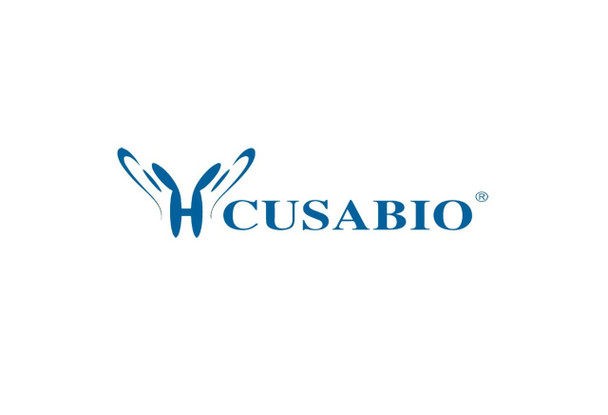Cusabio Human Recombinants
Recombinant Human Poly (A) -specific ribonuclease PARN (PARN) | CSB-YP017456HU
- SKU:
- CSB-YP017456HU
- Availability:
- 25 - 35 Working Days
Description
Recombinant Human Poly (A) -specific ribonuclease PARN (PARN) | CSB-YP017456HU | Cusabio
Alternative Name(s): Deadenylating nucleaseDeadenylation nucleasePolyadenylate-specific ribonuclease
Gene Names: PARN
Research Areas: Transcription
Organism: Homo sapiens (Human)
AA Sequence: MEIIRSNFKSNLHKVYQAIEEADFFAIDGEFSGISDGPSVSALTNGFDTPEERYQKLKKHSMDFLLFQFGLCTFKYDYTDSKYITKSFNFYVFPKPFNRSSPDVKFVCQSSSIDFLASQGFDFNKVFRNGIPYLNQEEERQLREQYDEKRSQANGAGALSYVSPNTSKCPVTIPEDQKKFIDQVVEKIEDLLQSEENKNLDLEPCTGFQRKLIYQTLSWKYPKGIHVETLETEKKERYIVISKVDEEERKRREQQKHAKEQEELNDAVGFSRVIHAIANSGKLVIGHNMLLDVMHTVHQFYCPLPADLSEFKEMTTCVFPRLLDTKLMASTQPFKDIINNTSLAELEKRLKETPFNPPKVESAEGFPSYDTASEQLHEAGYDAYITGLCFISMANYLGSFLSPPKIHVSARSKLIEPFFNKLFLMRVMDIPYLNLEGPDLQPKRDHVLHVTFPKEWKTSDLYQLFSAFGNIQISWIDDTSAFVSLSQPEQVKIAVNTSKYAESYRIQTYAEYMGRKQEEKQIKRKWTEDSWKEADSKRLNPQCIPYTLQNHYYRNNSFTAPSTVGKRNLSPSQEEAGLEDGVSGEISDTELEQTDSCAEPLSEGRKKAKKLKRMKKELSPAGSISKNSPATLFEVPDTW
Source: Yeast
Tag Info: N-terminal 6xHis-tagged
Expression Region: 1-639aa
Sequence Info: Full Length
MW: 75.5 kDa
Purity: Greater than 90% as determined by SDS-PAGE.
Relevance: 3'-exoribonuclease that has a preference for poly(A) tails of mRNAs, thereby efficiently degrading poly(A) tails. Exonucleolytic degradation of the poly(A) tail is often the first step in the decay of eukaryotic mRNAs and is also used to silence certain maternal mRNAs translationally during oocyte maturation and early bryonic development. Interacts with both the 3'-end poly(A) tail and the 5'-end cap structure during degradation, the interaction with the cap structure being required for an efficient degradation of poly(A) tails. Involved in nonsense-mediated mRNA decay, a critical process of selective degradation of mRNAs that contain prature stop codons. Also involved in degradation of inherently unstable mRNAs that contain AU-rich elents (AREs) in their 3'-UTR, possibly via its interaction with KHSRP. Probably mediates the roval of poly(A) tails of AREs mRNAs, which constitutes the first step of destabilization.
Reference: Complete sequencing and characterization of 21,243 full-length human cDNAs.Ota T., Suzuki Y., Nishikawa T., Otsuki T., Sugiyama T., Irie R., Wakamatsu A., Hayashi K., Sato H., Nagai K., Kimura K., Makita H., Sekine M., Obayashi M., Nishi T., Shibahara T., Tanaka T., Ishii S. , Yamamoto J., Saito K., Kawai Y., Isono Y., Nakamura Y., Nagahari K., Murakami K., Yasuda T., Iwayanagi T., Wagatsuma M., Shiratori A., Sudo H., Hosoiri T., Kaku Y., Kodaira H., Kondo H., Sugawara M., Takahashi M., Kanda K., Yokoi T., Furuya T., Kikkawa E., Omura Y., Abe K., Kamihara K., Katsuta N., Sato K., Tanikawa M., Yamazaki M., Ninomiya K., Ishibashi T., Yamashita H., Murakawa K., Fujimori K., Tanai H., Kimata M., Watanabe M., Hiraoka S., Chiba Y., Ishida S., Ono Y., Takiguchi S., Watanabe S., Yosida M., Hotuta T., Kusano J., Kanehori K., Takahashi-Fujii A., Hara H., Tanase T.-O., Nomura Y., Togiya S., Komai F., Hara R., Takeuchi K., Arita M., Imose N., Musashino K., Yuuki H., Oshima A., Sasaki N., Aotsuka S., Yoshikawa Y., Matsunawa H., Ichihara T., Shiohata N., Sano S., Moriya S., Momiyama H., Satoh N., Takami S., Terashima Y., Suzuki O., Nakagawa S., Senoh A., Mizoguchi H., Goto Y., Shimizu F., Wakebe H., Hishigaki H., Watanabe T., Sugiyama A., Takemoto M., Kawakami B., Yamazaki M., Watanabe K., Kumagai A., Itakura S., Fukuzumi Y., Fujimori Y., Komiyama M., Tashiro H., Tanigami A., Fujiwara T., Ono T., Yamada K., Fujii Y., Ozaki K., Hirao M., Ohmori Y., Kawabata A., Hikiji T., Kobatake N., Inagaki H., Ikema Y., Okamoto S., Okitani R., Kawakami T., Noguchi S., Itoh T., Shigeta K., Senba T., Matsumura K., Nakajima Y., Mizuno T., Morinaga M., Sasaki M., Togashi T., Oyama M., Hata H., Watanabe M., Komatsu T., Mizushima-Sugano J., Satoh T., Shirai Y., Takahashi Y., Nakagawa K., Okumura K., Nagase T., Nomura N., Kikuchi H., Masuho Y., Yamashita R., Nakai K., Yada T., Nakamura Y., Ohara O., Isogai T., Sugano S.Nat. Genet. 36:40-45(2004)
Storage: The shelf life is related to many factors, storage state, buffer ingredients, storage temperature and the stability of the protein itself. Generally, the shelf life of liquid form is 6 months at -20?/-80?. The shelf life of lyophilized form is 12 months at -20?/-80?.
Notes: Repeated freezing and thawing is not recommended. Store working aliquots at 4? for up to one week.
Function: 3'-exoribonuclease that has a preference for poly(A) tails of mRNAs, thereby efficiently degrading poly(A) tails. Exonucleolytic degradation of the poly(A) tail is often the first step in the decay of eukaryotic mRNAs and is also used to silence certain maternal mRNAs translationally during oocyte maturation and early embryonic development. Interacts with both the 3'-end poly(A) tail and the 5'-end cap structure during degradation, the interaction with the cap structure being required for an efficient degradation of poly(A) tails. Involved in nonsense-mediated mRNA decay, a critical process of selective degradation of mRNAs that contain premature stop codons. Also involved in degradation of inherently unstable mRNAs that contain AU-rich elements (AREs) in their 3'-UTR, possibly via its interaction with KHSRP. Probably mediates the removal of poly(A) tails of AREs mRNAs, which constitutes the first step of destabilization.
Involvement in disease: Dyskeratosis congenita, autosomal recessive, 6 (DKCB6); Pulmonary fibrosis, and/or bone marrow failure, telomere-related, 4 (PFBMFT4)
Subcellular Location: Nucleus, Cytoplasm, Nucleus, nucleolus
Protein Families: CAF1 family
Tissue Specificity: Ubiquitous.
Paythway:
Form: Liquid or Lyophilized powder
Buffer: If the delivery form is liquid, the default storage buffer is Tris/PBS-based buffer, 5%-50% glycerol. If the delivery form is lyophilized powder, the buffer before lyophilization is Tris/PBS-based buffer, 6% Trehalose, pH 8.0.
Reconstitution: We recommend that this vial be briefly centrifuged prior to opening to bring the contents to the bottom. Please reconstitute protein in deionized sterile water to a concentration of 0.1-1.0 mg/mL.We recommend to add 5-50% of glycerol (final concentration) and aliquot for long-term storage at -20?/-80?. Our default final concentration of glycerol is 50%. Customers could use it as reference.
Uniprot ID: O95453
HGNC Database Link: HGNC
UniGene Database Link: UniGene
KEGG Database Link: KEGG
STRING Database Link: STRING
OMIM Database Link: OMIM









